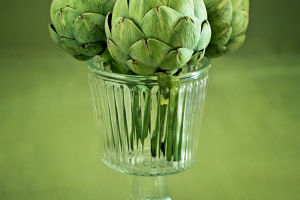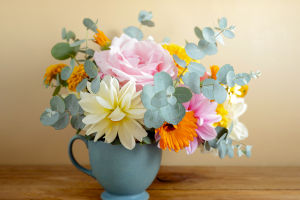Hydrangeas, belonging to the genus Hydrangea in the Rhododendron family, are widely known and cherished as ornamental flowers.
Originating from East Asia, including regions like China, Japan, and the Korean Peninsula, these flowers have captivated the hearts of many with their stunning beauty.
The defining characteristic of hydrangeas lies in their rounded or spherical inflorescences composed of numerous delicate flowers. The colors of their blooms are remarkably diverse, ranging from pristine whites to soft pinks, vibrant blues, and majestic purples.
Interestingly, the color of hydrangea flowers can be influenced by the pH level of the soil. In acidic soil, the flowers tend to lean towards blue hues, while alkaline soil may bring out pink tones.
This intriguing feature adds to the allure of hydrangeas, making them immensely popular among gardening enthusiasts.
Hydrangeas thrive in warm and humid climates, favoring environments with a balance of sunlight and shade. Typically, they grace us with their blossoms during the spring and summer seasons, brightening up landscapes for an extended period.
Nurturing hydrangeas is relatively uncomplicated, requiring ample sunlight exposure and appropriate watering. During the active growth phase, applying a moderate amount of fertilizer can promote healthy plant development and the formation of abundant flower buds.
These enchanting flowers not only find a home in flower beds, patios, and gardens but also serve as exquisite cut flower decorations. Moreover, once the blooms have dried, they can be preserved as dried flowers, offering a delightful addition to interior design aesthetics.
Hydrangeas possess a mesmerizing allure and are highly sought-after as ornamental flowers due to their wide range of colors and adaptability to various conditions. They bring vibrant splendor to any setting and are beloved by countless gardening enthusiasts.
Within the Hydrangea genus, several species and cultivars further enhance the diversity and splendor of these flowers. Here are some noteworthy hydrangea species:
1. Hydrangea macrophylla : Also referred to as panicle hydrangea, this species is among the most prevalent. Its spherical or cone-shaped flowers enchant with shades of blue, pink, purple, or white. Notable varieties include 'Nikko Blue,' 'Endless Summer,' and 'Penny Mac.'
2.Hydrangea paniculata: Hydrangea paniculata showcases impressive panicle-shaped inflorescences adorned with larger flowers.
These flowers commonly exhibit hues of white or pale pink, which may gradually transition to pink or red as they mature. Prominent cultivars encompass 'Limelight,' 'Pinky Winky,' and 'Grandiflora.'
3. Hydrangea serrata: Similar to Hydrangea macrophylla, this species boasts smaller, loosely clustered flowers. Its blossoms manifest in captivating shades of blue, pink, and white. Well-known cultivars include 'Tuff Stuff' and 'Preziosa.'
4. Hydrangea quercifolia: Hydrangea quercifolia derives its name from its oak leaf-shaped foliage. Its petite, cone-shaped flowers radiate elegance in white or pink tones. 'Snow Queen' stands out as a renowned cultivar of this hydrangea species.
5.Hydrangea involucrata: Hydrangea involucrata showcases inflorescences enveloped by larger bracts, resembling buds. The flowers grace us with their presence in delicate white or pink shades.
In addition to the aforementioned species, other hydrangea types and cultivars exist, such as Hydrangea arborescens (hat flower hydrangea) and Hydrangea serratifolia (mountain hydrangea), among others.
These distinct variations encompass diverse flower shapes, colors, and growth habits, enriching the options available to flower enthusiasts and gardeners alike.


